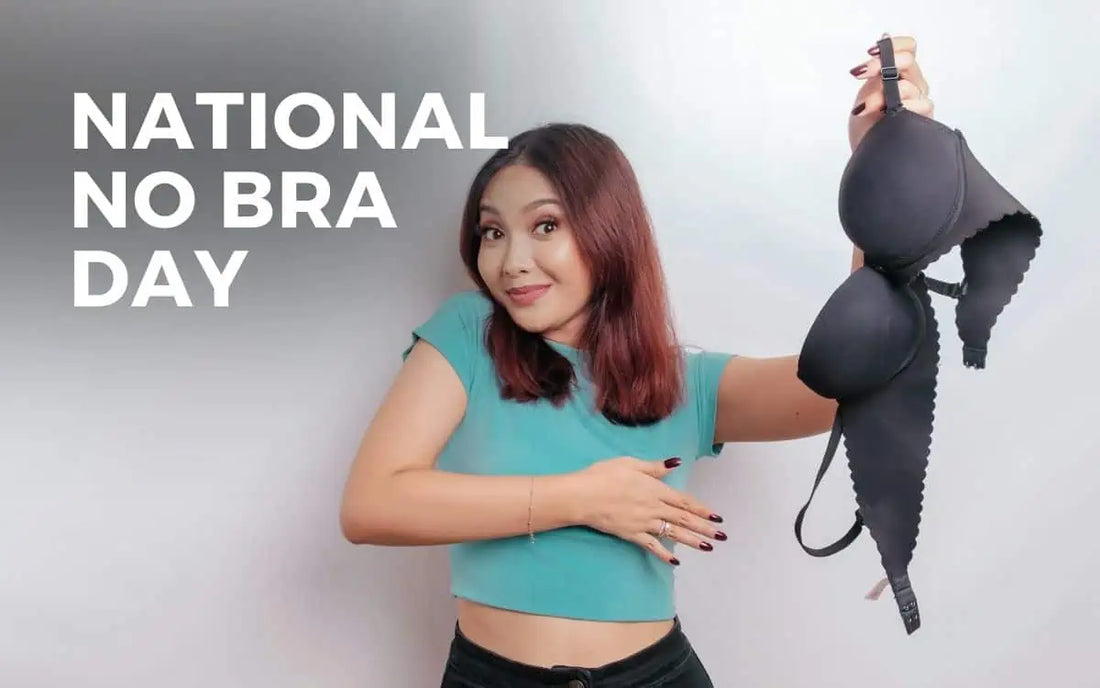In the world of advocacy and awareness campaigns, No Bra Day stands out as a unique and empowering movement. Held annually on October 13th, this day encourages individuals to free themselves from the confines of bras, all while promoting an important message – breast cancer awareness. In this blog post, we will delve into the history, advocacy, and controversies surrounding No Bra Day, shedding light on why this movement matters.
A Look Back at the Origins of No Bra Day
The origins of No Bra Day trace back to social media platforms like Facebook and Twitter in the early 2010s. Women began using these platforms to express their desire for a day where they could go without wearing a bra comfortably. It didn't take long for this idea to gain momentum and evolve into a powerful statement about breast cancer awareness.
Social Media's Role in Raising Awareness
As No Bra Day gained recognition, it quickly became more than just a comfortable day without undergarments. It morphed into an opportunity for women and men alike to discuss the importance of early detection, regular check-ups, and the significance of breast health. Social media played a vital role in spreading the message far and wide, allowing individuals from various corners of the world to come together for this important cause.
The Core Message of No Bra Day: Breast Cancer Awareness
At its heart, No Bra Day serves as a reminder that breast health should never be overlooked. The act of going braless for a day carries a powerful message – it encourages people to engage in conversations about breast cancer awareness. This movement aims to emphasize the importance of self-examinations, regular screenings, and early detection. By embracing this day, individuals not only promote body positivity but also actively advocate for better breast health practices.
Getting Involved: Activities and Initiatives
Participating in No Bra Day can take various forms, and individuals are encouraged to find ways to get involved that align with their comfort levels and preferences. Some may choose to simply go braless for the day as a personal statement, while others may engage in community activities and events. Here are a few ways to get involved:
- Social Media Engagement: Use social media platforms to share informative posts about breast cancer awareness, using relevant hashtags like #NoBraDay and #BreastCancerAwareness.
- Educational Events: Attend or organize events focused on breast health education. These events often feature talks from medical professionals and breast cancer survivors.
- Fundraising Initiatives: Many organizations run fundraisers during Breast Cancer Awareness Month (October). Donating to these causes or participating in charity walks can be a meaningful way to contribute.
- Self-Examinations: Take some time on No Bra Day to perform breast self-examinations. Share information about the importance of these exams with others.
- Supportive Apparel: If going completely braless feels uncomfortable, consider wearing a bralette or sports bra as an alternative to traditional underwire bras.
Controversies and Criticisms
Addressing Concerns and Misconceptions
While No Bra Day carries a valuable message of breast cancer awareness, it has not been without its share of controversies and criticisms. Some individuals express concerns that the movement may objectify women or trivialize the serious nature of breast cancer. It is important to address these concerns and clarify the intent behind No Bra Day.
First and foremost, No Bra Day is not intended to objectify women or diminish the gravity of breast cancer. Instead, it seeks to empower individuals to make informed choices about their breast health. Critics may argue that a single day of awareness is insufficient, and they are absolutely correct. No Bra Day serves as a starting point, a conversation starter, and an opportunity for individuals to consider the importance of breast health throughout the year.
Additionally, the movement recognizes that not everyone can comfortably participate in going braless due to medical or personal reasons. It is entirely optional, and individuals are encouraged to participate in ways that feel meaningful to them.
Conclusion
In conclusion, No Bra Day has evolved from a simple idea into a powerful advocacy movement for breast cancer awareness. It reminds us that breast health should never be taken for granted and encourages us to prioritize regular check-ups, self-examinations, and early detection.
While No Bra Day may not be free from criticisms and controversies, its core message remains essential. By participating in this movement, individuals worldwide can contribute to spreading awareness, supporting those affected by breast cancer, and promoting a healthier and more informed approach to breast health.
So, as No Bra Day approaches each year, let's remember the significance of this movement and continue advocating for better breast health practices. Let's use our voices, our actions, and our conversations to ensure that awareness leads to action, and that together, we can make a difference in the fight against breast cancer.




